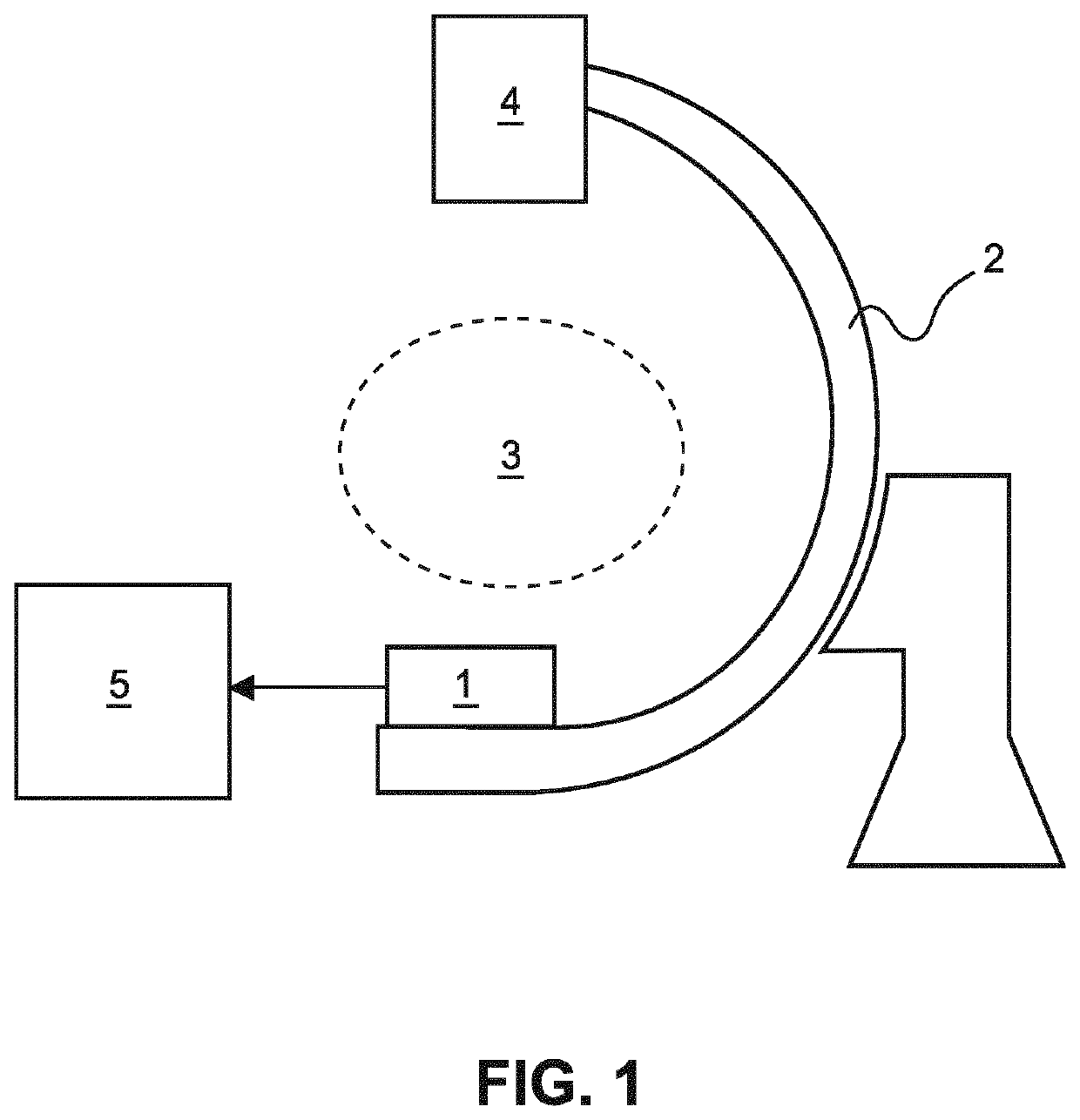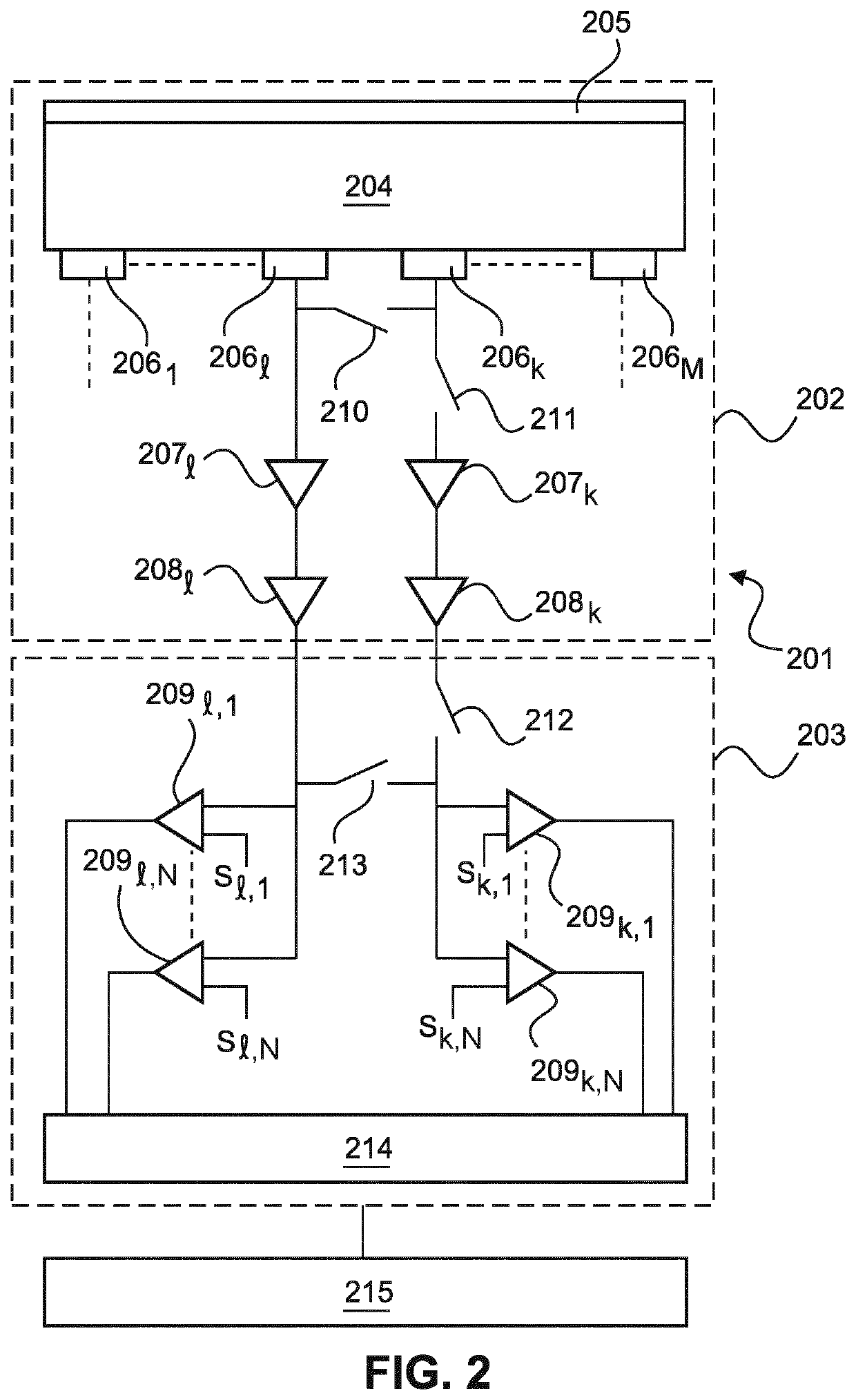X-ray and gamma imaging using a single radiation detector
- Summary
- Abstract
- Description
- Claims
- Application Information
AI Technical Summary
Benefits of technology
Problems solved by technology
Method used
Image
Examples
Embodiment Construction
[0032]FIG. 1 schematically and exemplarily shows components of a combined x-ray and gamma imaging system, which includes a single direct conversion radiation detector 1 for detecting x-ray and gamma photons. The radiation detector 1 is configured as photon-counting spectral detector, which is capable of detecting individual photon events and assigning each detection event to one of a plurality of energy bins. The energy bins correspond to predetermined energy intervals. The system may particularly be used in medical applications in order to acquire three-dimensional x-ray and nuclear images of regions of patient bodies. However, the system may likewise be utilized in order to image other objects.
[0033]Since the radiation detector 1 is configured as a spectral detector, the system is capable of generating energy-selective x-ray images. For instance, these images allow for distinguishing between different materials of the object—this usually also referred to as material decomposition....
PUM
 Login to View More
Login to View More Abstract
Description
Claims
Application Information
 Login to View More
Login to View More - R&D
- Intellectual Property
- Life Sciences
- Materials
- Tech Scout
- Unparalleled Data Quality
- Higher Quality Content
- 60% Fewer Hallucinations
Browse by: Latest US Patents, China's latest patents, Technical Efficacy Thesaurus, Application Domain, Technology Topic, Popular Technical Reports.
© 2025 PatSnap. All rights reserved.Legal|Privacy policy|Modern Slavery Act Transparency Statement|Sitemap|About US| Contact US: help@patsnap.com


